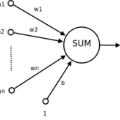As a result of the greater availability of big data, as well as the decreasing costs and increasing power of modern computing, the use of artificial neural networks for financial time series forecasting is once again a major topic of discussion and research in the financial world. Despite this academic focus, there are still contrasting opinions and bodies of literature on which artificial neural networks perform the best and whether or not they outperform the forecasting capabilities of conventional time series models. This paper uses a long-short term memory network to perform financial time series forecasting on the return data of the JSE Top 40 index. Furthermore, the forecasting performance of the long-short term memory network is compared to the forecasting performance of a seasonal autoregressive integrated moving average model. This paper evaluates the varying approaches presented in the existing literature and ultimately, compares the results to that existing literature. The paper concludes that the long short-term memory network outperforms the seasonal autoregressive integrated moving average model when forecasting intraday directional movements as well as when forecasting the index close price.
翻译:由于大数据的可获性增加,以及费用不断降低和现代计算能力不断提高,利用人工神经网络进行金融时序预测再次成为金融界讨论和研究的一个主要主题。尽管有这一学术重点,但对于人工神经网络发挥最佳效果以及是否优于常规时间序列模型的预测能力的各种不同观点和文献体系仍然存在差异。本文使用长期短期记忆网络对JSE 顶部40指数的回报数据进行财务时间序列预测。此外,长期短期记忆网络的预测业绩与季节性自动递减综合移动平均模型的预测业绩相比较。本文评估了现有文献中介绍的不同方法,最终将结果与现有文献进行比较。论文的结论是,长期短期记忆网络在预测日内方向变化和预测指数接近价格时,超越了季节性自动递增综合移动平均模型。




